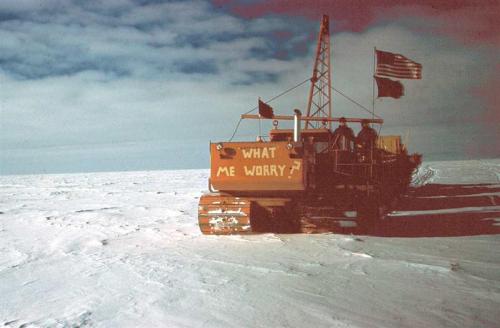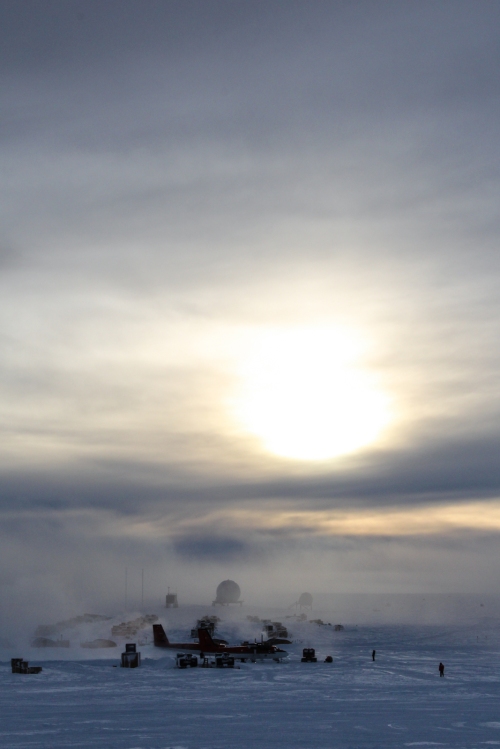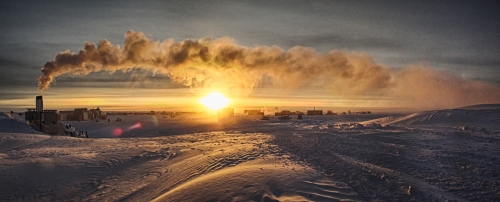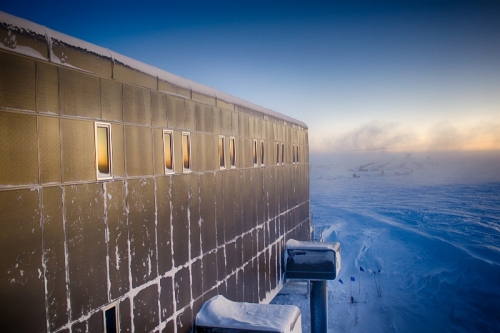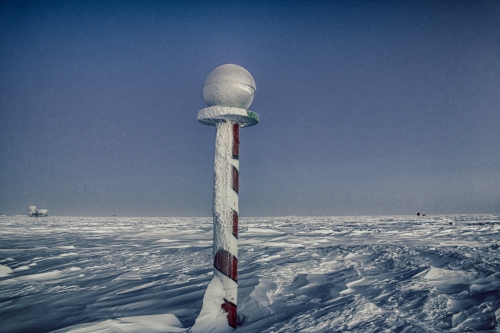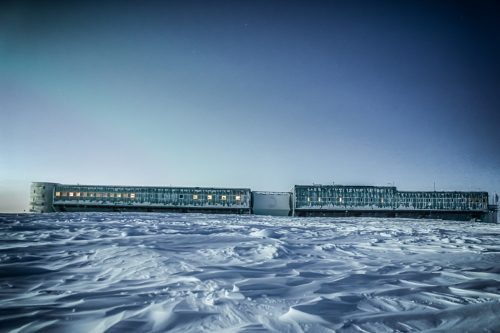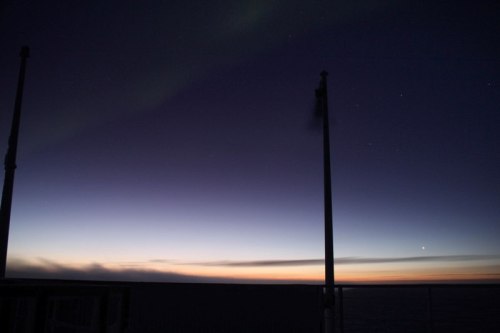(I am not an official representative of the NSF or USAP, all opinions stated below are mine personally and do not necessarily reflect those of the NSF, USAP, or the US Government)
“All field and research activities not essential to human safety and preservation of property will be suspended.”
Friends have lost their jobs, research opportunities are lost forever, and the sheer logistical nightmare of shutting down USAP operations is underway. With the US government shutdown federal funding has been cut across the board and the NSF is no exception. The USAP has lost funding and is moving forward with a plan to run the stations in “Caretaker Status.” This means we’ll have a very minimal skeleton crew, no field camps, no science, just maintaining the stations so they can be used again next year. For example, the peak population at the South Pole this summer might be 50 people, rather than the 250 scientists and support staff of previous seasons. McMurdo might max out at 100-150, rather than 1200. Rumors abound and facts change daily, but either way much of the science and projects for this upcoming season have been cancelled and it’s too late to put it back on line.
It’s been hard – the program is just ramping up to begin the short summer research season. The winter across the continent is long, dark, and cold. Research projects, surveys of all sorts, construction projects, maintenance projects, resupply, and anything beyond the immediate vicinity of the stations is all but impossible during the winter. Not to mention research projects that involve the sea, animals, remote sites, the dry valleys…There is one window for all of that work each year – and it’s only about 5 months long. The last government shutdown (1995-96) came in the middle of the season when it was too late to turn things around. This time, however, the entire year has been cancelled – and even if the government figures things out, it’s already too late. The USAP is moving forward with a plan to shut the program down. The USAP announced the decision on Oct 8 (the full press release can be found here):
“Under caretaker status, the USAP will be staffed at a minimal level to ensure human safety and preserve government property, including the three primary research stations, ships and associated research facilities. All field and research activities not essential to human safety and preservation of property will be suspended.” They continue, “It is important to note, however, that some activities cannot be restarted once seasonally dependent windows for research and operations have passed, the seasonal workforce is released, science activities are curtailed and operations are reduced.”
Thankfully, I’m only affected peripherally. Pole already has a minimal crew in winter and I’m at the end of my contract, still planning to leave Pole in early November. The incoming crew will get the brunt of it. This next season will indeed be…unique. I have many friends who made it to McMurdo and are now being sent home, or who are in the process of deploying right now, or who were planning on it…friends who quit their jobs, rented out their homes, put everything in storage, and were relying on the paycheck of a several month contract.
For more information I can direct you to already published articles. Nature’s Oct. 4 article outlines possible repercussions of shutting down the USAP – www.nature.com/news/us-antarctic-research-season-is-in-jeopardy. NPR’s Oct, 8 article has an audio story as well (www.npr.org/blogs/thetwo-way/2013/10/09/230445614/shutdown-forces-antarctic-research-into-caretaker-status). And the tourist groups Adventure Network International (ANI) and Antarctic Logistics & Expeditions (ALE), supporting skiers and tourist groups that visit the South Pole in the austral summer, wrote this article touching on how this might impact their operations (not a whole lot, but sad nonetheless) – www.explorersweb.com/polar/news.php?url=south-pole-shuts-down. On Oct 11, Wired explained some good points in their article, stressing that this isn’t just like taking a few days off, there is no “back-pay” or workers and researchers who are sent home, there is no undoing – shutting down the US Antarctic Program will have long term, global, repercussions – www.wired.com/wiredscience/2013/10/why-shutting-down-u-s-antarctic-research-will-have-global-repercussions. More recently the New York Times published an article (Oct 14) stressing the hope that some researchers are clinging to, that they might be allowed to get their samples or do their work if funding returns (www.nytimes.com/2013/10/15/us/an-american-shutdown-reaches-the-earths-end).
For a less formal opinion – here are some blog posts from other Ice people that I recommend:
I know that established ‘ice people’ are resilient and will figure something out, but it won’t be easy. If you were planning on going to the ice and have been laid off, check out Bill Spindler’s link above (he might have some more resources) and the Facebook group “Ice Friends Helping Ice Friends” has plethora of housing and seasonal job ads. For those of you who were on your way down for the first time, there’s nothing I can say to make it any better. It’s heartbreaking, I know, and I am truly deeply sorry. I hope you will have another chance someday – Don’t give up!
My own experience reaching the ice was thwarted two years in a row. I had decided early in elementary school that one day I would go to Antarctica. It was a dream come true when, almost a decade later, I was hired as a Core Handler for the WAIS Divide project in 2008. The day prior to deploying (my bags packed, tickets in hand, everything in storage…) I crashed my bicycle and separated my shoulder. NPQ’d. I was devastated. Six months later I was hired to be one of a few Field Operations Assistants at Toolik Field Camp in Northern Alaska. It was a foot in the door, a way into the seemingly elite world of polar logistics and I had an invitation to return as a Core Handler for WAIS Divide that upcoming austral summer. Yet again, however, my hopes were dashed when I tore my ACL in a skiing accident a week before heading north. I struggled to find something to do instead. Everything was set on working at the Poles. I had majored in Geology in part because I figured Glaciology would be one of the best ways to get to Antarctica. My geology field work was studying glaciers with the Juneau Icefield Research Program, and I returned as staff to lead the Mass Balance project the summer after graduating. Flying to Europe after high school, I pressed myself to the little plastic window, peering excitedly down at the blinding white expanse of the Greenland ice sheet – “I will go there someday.”
With three seasons in a row shot down, I hated to think that this just wasn’t meant to be. I had felt innately drawn to the ice, to polar work in general- both to the research and logistics. After so long I couldn’t just give it all up and do something else. I grew even more determined. I pressed all my friends in Geology, glaciology, science support – anyone I knew who knew someone who had been to the Ice, who had been to Toolik or Barrow, who had been to Greenland. I called on professors at the University in my home town and emailed researchers around the world. I applied to every job I might barely qualify for…and begged for recommendations and contacts from friends in the field. I didn’t care what I did or if I got paid, it was just a matter of getting my foot in the door. It was hard to get a job without knowing someone.Finally it paid off.
In early 2010 I got a call asking if I would like to work as the Field Coordinator at Summit Station, Greenland. I couldn’t believe it. Could I PQ and deploy in 2 weeks? Sure! Did I want to spend April-August in the heart of the Greenland ice sheet? ABSOLUTELY. I tried not to get my hopes up, tried to have backup a plan. I didn’t let myself get too excited until I was in Kanger, Greenland…then on the herc, then on the ice sheet itself looking up at the contrails of planes heading to Europe. Everything fell into place after that. Since then I have bounced between Antarctica and Greenland working as a General Assistant (GA), Science Tech, Cargo (when I started this blog), and as a Heavy Equipment Operator (HEO). And here I am, wrapping up my first Antarctic winter at the Pole in Waste Management/Spill Response. I might just be a lifer.
We joke that it’s not all rainbows and penguins. Seasons are hard – the frenetic pace of summer is exhausting, but so is the marathon of winter. Most jobs are very physical demanding, though the social situation can be even more challenging. There are a growing number of people who are here because they can’t find a job at home – they don’t necessarily want to be here and don’t necessarily like it here, and they bring everyone else down. But there are also people who love it here, who come not for money, but for the idea, the community, and the adventure. I’m really ready to go at the end of each season, sometimes wondering why I do this to myself, and yet as soon as I step off the ice I’m thinking about the next season. The lows might be LOW, but the highs are HIGH. Plus, it’s pretty nice to work for a few months and then get a few months off. But above and beyond all that – the simple truth is that I love it! I love the ice, I love Antarctica, I love the cold, I love the Hercs, I love the excitement of a new season, I love the crazy research, I love the dichotomies of this extreme world, I love the simpleness of the world here, the pureness. I refer you once more to Genevieve’s blog and her most recent post, A Sordid Love Story, about her love of the ice, her first deployment, and the pain of almost being sent home this year. She puts words to these feelings better than I can.
Anyone who has worked or researched on the ice knows weather rules all…delays are just part of the game, but this season is a whole new story. Science hasn’t just been delayed – it’s been cancelled. And that’s the only reason any of us are here – to support science. With the climate changing as it is, it’s more important than ever to study what we can, to try to understand these systems and quantify the rate of melting ice. Politics aside, in the grand scheme of things it’s too late to turn things around. There is no debate or disagreement among the global scientific community. Millions of people have been affected by climate change and millions more will be. The sea level is rising and will continue to rise. That’s the thing about science; It’s true whether you believe it or not. It blows my mind that a group like the Tea Party Republicans can exist in this day and age, demanding a state based on “Christian” beliefs while refusing to help those in need and while they throw their tantrums and refuse to do their jobs we are losing critical scientific and educational opportunities. There is a reason why America is not number 1 in education, research, technology, health, happiness…
But to end things on a lighter note…here are penguins in sweaters! Click on the image to go to the related article:

New Zealand penguins in sweaters after an oil spill this month – the sweaters keep them from pruning themselves and being poisoned by the oil while keeping them warm until they can be cleaned.
